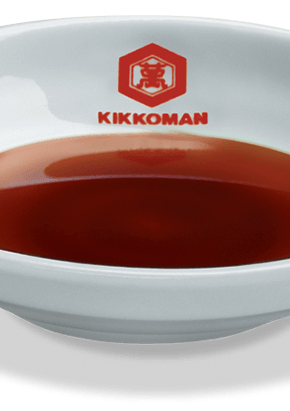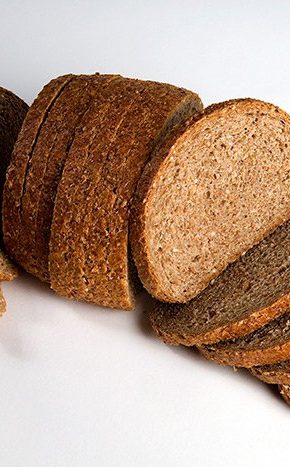Characteristics of Soy Sauce

The difference between brewed and non-brewed soy sauce go far beyond production methods. Brewed soy sauce has almost 300 identifiable constituents amongst ingredients in food products.
These work together to create flavour and aroma (a few listed in the accompanying table). They are the direct result of several reactions that take place concurrently during fermentation.
Kikkoman has over three centuries of experience brewing soy sauce the natural way, with only water, soybeans, wheat and salt. With that expertise comes a rich heritage of uncompromising dedication to quality and tradition.
Salt
The brine added at the beginning of the fermentation contributes saltiness, with the finished salt concentration from 12.0% to 18.0% (w/v). But the salt isn’t there only for flavour – it is essential to the process.
If, for example, the added salt level were reduced, the lactic acid, bacteria and yeast in the moromi would act differently and yield a product with a very different flavour profile. The salt concentration is also necessary to help protect the finished sauce from spoilage.
Amino Acids
Enzymes convert the soybean protein into amino acids (such as glutamic acid, aspartic acid, lysine, alanine, glycine and tryptophan) and peptides. Not only do these amino acids and peptides contribute
a full, robust flavour, but many can also act as a flavour potentiator.
Finished soy sauce contains between 1.5% and 1.65% total nitrogen (w/v), with glutamic acid being the predominant amino acid.
Sugar
The moromi enzymes also convert the wheat starch into sugars. Adequate sugar development is important to the finished soy sauce because it subdues the saltiness.
Although glucose is the primary sugar, more that ten others have been isolated. Yeasts acts upon a portion of these sugars to form alcohols. Ethanol is the predominant of these and imparts many flavouring and aromatic characteristics. It also indicates the presence of other aromatic compounds produced by fermentation. Ethanol content varies depending on the type of soy sauce.
In tamari sauce, for example, the lower levels of wheat don’t contribute enough starch to create ethanol, so its flavour profile is entirely different.
Colour
Some of the amino acids and the sugar subsequently undergo a Maillard reaction during fermentation to develop the sauce’s characteristic reddish brown colour. Careful process control, learned through years of soy sauce brewing, is critical here, because the flavour will be adversely affected if too many of these flavour contributing components change into colouring substances. If the finished sauce is exposed to oxygen, its colour will darken undesirably.
To protect both the flavour and colour, opened containers of soy sauce should be sealed and refrigerated to control this reaction.
Acids
part of the alcohols and an additional portion of the sugar react to produce acids. Finished soy sauce has a pH of about 4.8 and contains around 1.0% lactic acid. This contributes a refined, rounded tartness that is thought to be one of the keys to good soy sauce flavour. In addition to lactic acid, more than ten other organic acids may also be identified.
Aromatic Esters
Ethanol, once again, is critical because it combines with some of these organic acids to form esters – the same esters that give fine wine their bouquet. Without this reaction virtually all of soy sauce’s aroma component would be missing. Because the sense of smell is so critical to taste, the importance of the alcohol content is clear.
Post Fermentation Development
While much of brewed soy sauce’s unique flavour can be attributed to the extended fermentation process, the refining process is also critical. The heat of pasteurisation further develops large numbers of compounds that contribute to aroma and flavour. At the same time, this step deepens the sauce’s colour. Of course, pasteurisation improves stability by inactivating most of the enzymes and by producing organic acids.



